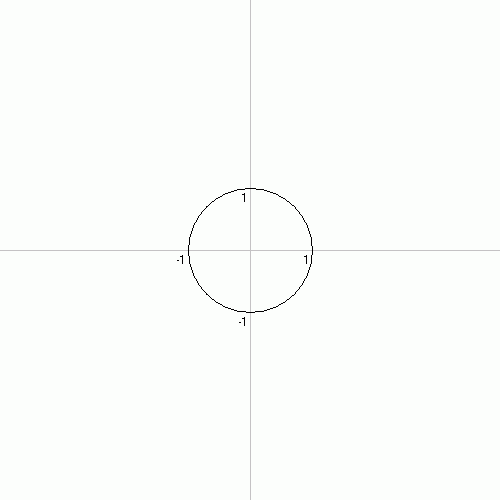65537-gon
| Regular 65537-gon | |
|---|---|
 A regular 65537-gon | |
| Type | Regular polygon |
| Edges and vertices | 65537 |
| Schläfli symbol | {65537} |
| Coxeter–Dynkin diagrams | |
| Symmetry group | Dihedral (D65537), order 2×65537 |
| Internal angle (degrees) | ≈179.994 507° |
| Properties | Convex, cyclic, equilateral, isogonal, isotoxal |
| Dual polygon | Self |
In geometry, a 65537-gon is a polygon with 65537 sides. The sum of the interior angles of any non-self-intersecting 65537-gon is 23592600°.
Regular 65537-gon
The area of a regular 65537-gon is (with t = edge length)
A whole regular 65537-gon is not visually discernible from a circle, and its perimeter differs from that of the circumscribed circle by about 15 parts per billion.
Construction
The regular 65537-gon (one with all sides equal and all angles equal) is of interest for being a constructible polygon: that is, it can be constructed using a compass and an unmarked straightedge. This is because 65537 is a Fermat prime, being of the form 22n + 1 (in this case n = 4). Thus, the values and are of a 32768-degree algebraic numbers, and like any constructible numbers they can be written in terms of square roots and no higher-order roots.
Although it was known to Gauss by 1801 that the regular 65537-gon was constructible, the first explicit construction of a regular 65537-gon was given by Johann Gustav Hermes (1894). The construction is very complex; Hermes spent 10 years completing the 200-page manuscript.[1] Another method involves the use of at most 1332 Carlyle circles, and the first stages of this method are pictured below. This method faces practical problems, as one of these Carlyle circles solves the quadratic equation x2 + x − 16384 = 0 (16384 being 214).[2]
Symmetry
The regular 65537-gon has Dih65537 symmetry, order 131074. Since 65537 is a prime number there is one subgroup with dihedral symmetry: Dih1, and 2 cyclic group symmetries: Z65537, and Z1.
65537-gram
A 65537-gram is a 65537-sided star polygon. As 65537 is prime, there are 32767 regular forms generated by Schläfli symbols {65537/n} for all integers 2 ≤ n ≤ 32768 as .
References
- ^ Johann Gustav Hermes (1894). "Über die Teilung des Kreises in 65537 gleiche Teile". Nachrichten von der Gesellschaft der Wissenschaften zu Göttingen, Mathematisch-Physikalische Klasse (in German). 3. Göttingen: 170–186.
- ^ DeTemple, Duane W. (Feb 1991). "Carlyle circles and Lemoine simplicity of polygon constructions" (PDF). The American Mathematical Monthly. 98 (2): 97–208. doi:10.2307/2323939. Archived from the original (PDF) on 2015-12-21. Retrieved 6 November 2011.
{{cite journal}}: Unknown parameter|deadurl=ignored (|url-status=suggested) (help)
Bibliography
- Weisstein, Eric W. "65537-gon". MathWorld.
- Robert Dixon Mathographics. New York: Dover, p. 53, 1991.
- Benjamin Bold, Famous Problems of Geometry and How to Solve Them New York: Dover, p. 70, 1982. ISBN 978-0486242972
- H. S. M. Coxeter Introduction to Geometry, 2nd ed. New York: Wiley, 1969. Chapter 2, Regular polygons
- Leonard Eugene Dickson Constructions with Ruler and Compasses; Regular Polygons Ch. 8 in Monographs on Topics of Modern Mathematics
- Relevant to the Elementary Field (Ed. J. W. A. Young). New York: Dover, pp. 352–386, 1955.
External links
- 65537-gon mathematik-olympiaden.de (German), with images of the documentation HERMES; retrieved on April 25, 2016
- Wikibooks 65573-Eck (German) Approximate construction of the first side in two main steps





